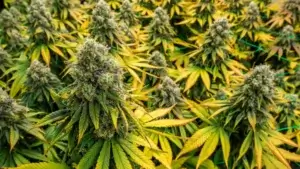Did you know that Japan has one of the strictest anti-cannabis laws in the world? In 2023, over 5,700 people were arrested for cannabis-related crimes 50% increase from 2019. Despite global trends toward legalization, Japan remains firm. But what does this mean for 2025? Let’s explore the laws, penalties, and future of cannabis in Japan.
Is Cannabis Legal in Japan? Legal Status in 2025
No, cannabis is illegal in Japan for recreational, medicinal, and most industrial uses (as of 2025). The Cannabis Control Law, set in 1948, makes it illegal to possess, sell, or grow cannabis. Even tiny amounts can lead to arrest. Some CBD products are allowed, but they must have 0% THC. THC is the chemical that causes a “high.”
1. Recreational Use
Recreational cannabis is fully illegal. Japan’s laws make no distinction between casual use and large-scale trafficking. A 2024 government survey found that 93% of Japanese citizens oppose legalizing recreational cannabis. They connect cannabis use to “harmful behavior.”
2. Medicinal Use
Medical cannabis is extremely restricted. In 2023, Japan approved its first cannabis-based medicine for severe epilepsy. Patients must get special permits to use it. Only 0.1% of doctors can prescribe it, and THC remains banned.
3. Industrial Use
Industrial hemp is allowed but tightly controlled. Farmers in Tochigi and Hokkaido can grow hemp if they have licenses. The plants must contain less than 0.3% THC. In 2024, Japan produced 40 tons of industrial hemp. They used most of it for textiles and religious rituals.
Cannabis Law and Control in Japan
3. How Japan Applies Cannabis Laws
Japan enforces cannabis laws strictly. Police conduct random checks at airports, and even a single joint can mean jail time. In 2024, 98% of weed arrests were for possession (not trafficking).
3. The Illegal Cannabis Market
Despite strict laws, Japan’s illegal cannabis market grew by 25% between 2020 and 2024. Most illegal products enter via mail or coastal smuggling. Authorities seized 400 kg of marijuana in 2023—a record high.
Cannabis Usage and Its Impact in Japan
1. Recreational Drug Use
Only 1.4% of Japanese adults admit to trying marijuana (vs. 18% in the U.S.). However, use among teens rose to 1.1% in 2024, sparking national debates.
2. Mental Health Concerns
Japan’s Health Ministry says weed is linked to a 30% increase in psychiatric hospital visits since 2020. Critics argue this data ignores the risks of alcohol and tobacco, which cause far more harm.
3. Industrial Cannabis Use
Hemp is used in traditional Shinto rituals and kimono-making. The industrial hemp market is worth $2 million each year. That’s small next to Canada’s $1 billion industry.
Cannabis Cultivation in Japan
Growing cannabis is illegal without a license. Only 47 farms nationwide hold permits for industrial hemp. These farms face yearly inspections and must destroy plants if THC levels exceed 0.3%. Unlicensed cultivation can lead to seven years in prison.
Cannabis Penalties in Japan
| Offense | Penalty |
| Personal Use | Fines up to ¥3 million ($20,000). |
| Trafficking | Up to 10 years in prison. |
| Growing | Fines up to ¥5 million ($32,500). |
Future of Cannabis Legalization in Japan
Japan’s cannabis laws are unlikely to change soon. A 2024 poll showed that 82% of citizens support keeping recreational use illegal. However, medical use debates are growing. Health experts urge laws to allow THC-based medicines for cancer and chronic pain.
The government plans to expand hemp farming for eco-friendly products like bioplastics. By 2030, Japan aims to double its hemp production but THC rules will stay strict.
In 2025, Japan will remain a no-tolerance zone for cannabis. While global trends shift, Japan prioritizes cultural values and strict drug control. For now, residents and visitors must avoid cannabis entirely to stay safe.
Related Posts:





